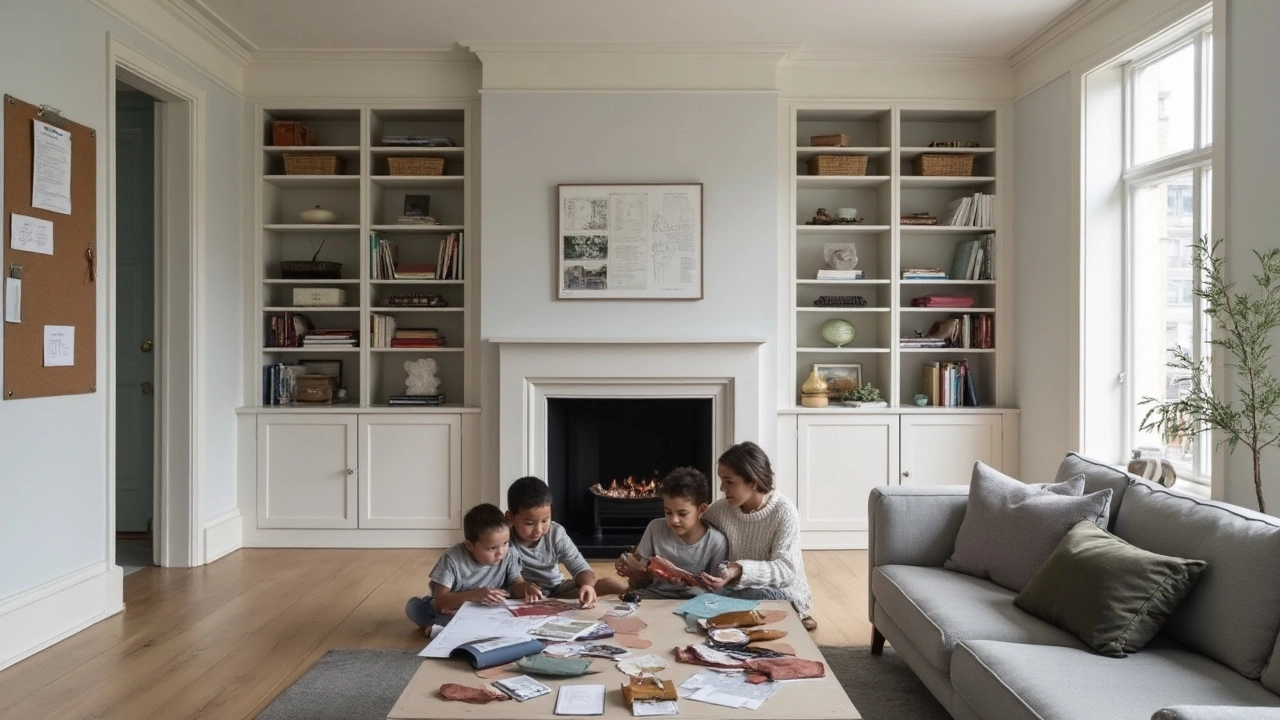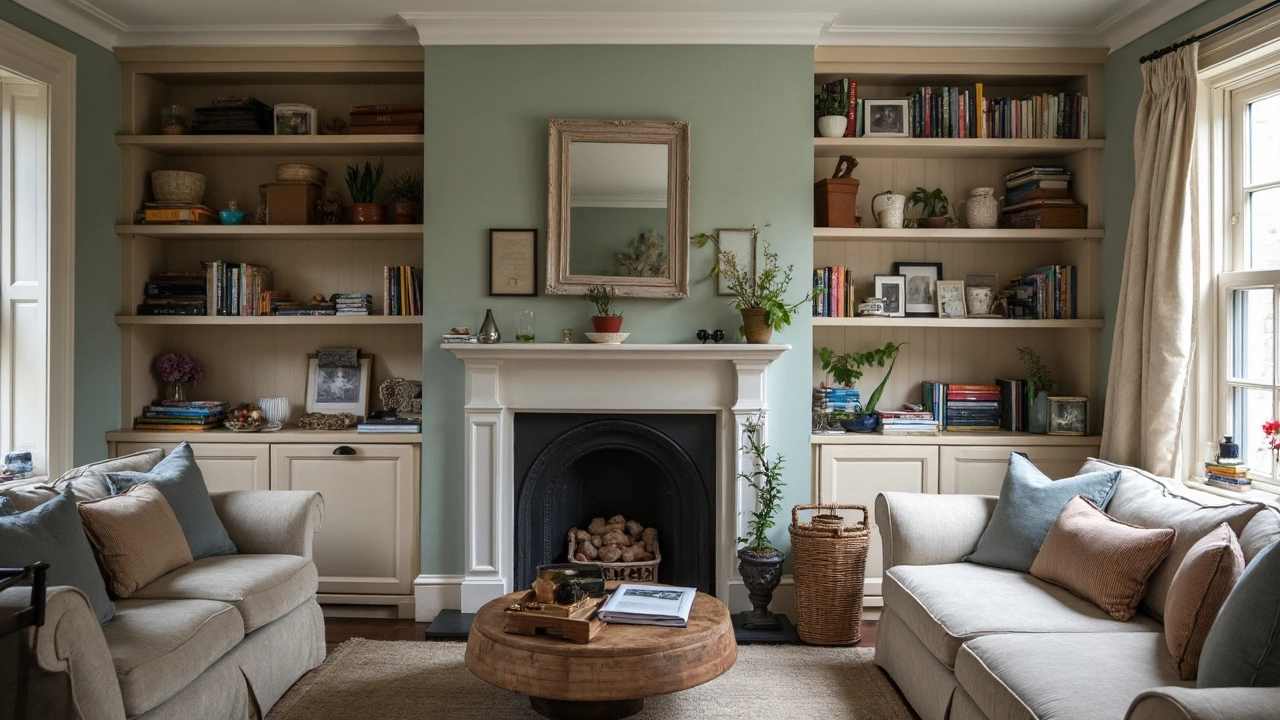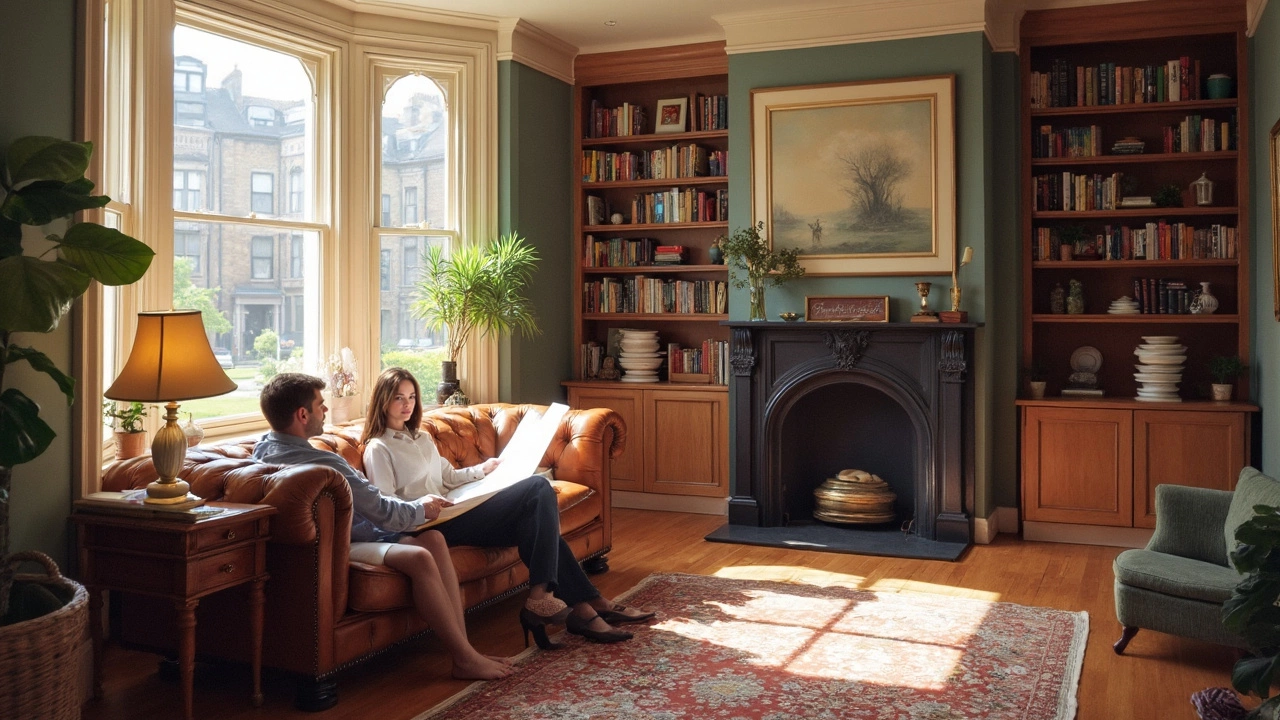Ever looked at a living room with wall-to-wall built-in shelves and thought, “Wow, that looks smart”? Well, you’re not alone. Built-in bookcases can turn a basic room into something special. But here’s the big question: do they really increase your home’s value, or are they just a nice bonus?
Buyers today love extra storage that feels like it belongs, not just a piece of furniture pushed against the wall. Bookcases built into the walls feel intentional and give a custom touch—something you usually see in those dreamy, high-end homes. Real estate agents often mention built-ins as a key selling point in their listings. They instantly make a room feel organized and upscale, especially when matched with the home’s style.
But before you grab a saw and start knocking holes in your drywall, you should know where that value comes from. Not every built-in adds cash to your sale price. The trick is blending storage with style so it feels like part of the house—like it was always meant to be there. Mess this up, and you could actually turn buyers away. Ready to find out how it really works? Let’s dig into what makes built-in bookcases a smart move—or a not-so-smart one.
- Why Built-Ins Catch Buyers' Eyes
- True Market Value: Numbers and Nuance
- Design Tips for Maximum Appeal
- Mistakes That Can Backfire
- Balancing Investment and Personal Taste
Why Built-Ins Catch Buyers' Eyes
Walk through any open house, and you’ll notice how people stop to check out built-in bookcases. Homebuyers remember these details because they bring something special to a space. It’s not just about where to put books—it’s about getting more storage, a sense of order, and a hint that someone invested real effort into making the home welcoming and functional.
Here’s why built-ins stand out:
- They make empty walls work harder, adding real value compared to a blank space or a basic piece of furniture.
- Built-ins feel high-end. They’re usually custom, so they signal to buyers that the previous owner spent a bit more for a polished look.
- They help rooms look less cluttered. When storage is built in, you don’t have random shelves or cabinets sticking out all over the place.
- Buyers love flexibility. It’s easy to picture built-in shelves filled with family photos, games, or even a TV. People see themselves living there.
Let’s talk specifics. According to a National Association of Home Builders (NAHB) survey, over 50% of homebuyers in 2023 put built-in storage—like bookcases, closets, or mudroom lockers—on their “most wanted” features list. Appraisers sometimes even boost a home's perceived quality in their reports if it has well-done built-ins, especially in living rooms or home offices.
| Feature | 2023 Buyer Interest (%) |
|---|---|
| Built-in Bookcases | 52 |
| Walk-In Pantry | 65 |
| Built-in Desks | 38 |
Bigger picture? If you’re after that "wow" moment at a house showing, built-in bookcases help you get there. People see extra care, extra storage, and extra style—all at once. They make a great first impression, especially in homes competing with modern new builds.
True Market Value: Numbers and Nuance
Let’s get specific—does adding built-in bookcases actually boost what your home is worth when it’s time to sell? The short answer: yes, but not as much as a flashy kitchen redo or a new bathroom. Still, the right built-in bookcases can tip buyers toward making an offer, especially if they love that custom look.
Looking at real estate reports from platforms like Zillow and Realtor.com, built-ins get called out in listings more and more. Recent data from 2024 shows homes with custom built-ins (including bookcases) in living rooms and offices can sell for 2-5% more than similar homes without them. So if your house is worth $400,000, you might see a boost of $8,000 to $20,000, depending on the market and your neighborhood. But there’s a big catch: quality and style matter as much as the shelves themselves.
| Feature | Potential Value Increase |
|---|---|
| Basic freestanding bookcase | $0–a few hundred dollars |
| Custom built-in bookcases | 2-5% of home price |
| Poorly done/dated built-ins | No increase, may decrease |
You also have to factor in what buyers actually want. Built-ins that match the home’s style or boost usable storage in common areas add the most value. But slap together some shelves that eat up space or clash with your décor, and buyers may see them as something they’ll have to rip out.
- Location matters—living rooms, home offices, and bedrooms are top spots.
- Materials should be solid—avoid cheap plywood or visible screws.
- Well-done lighting or closed storage below bumps value higher.
So numbers-wise, built-ins can give you a small but real bump in resale price—if you keep them tasteful, useful, and nicely built. Half-baked jobs or odd designs? Not so much.

Design Tips for Maximum Appeal
If you want built-in bookcases to pay off, remember this: they should look like they belong in your house. Awkward sizing, mismatched colors, or busy details can make them stick out in a bad way. The best built-ins match the home’s style and mood. For a modern house, go for clean lines and simple finishes. In older homes, some molding or trim that echoes the age of the place will make shelves look original, not like an afterthought.
Another thing buyers love? Functionality. Don’t just think about books. Shelves with a mix of open space, closed cabinets, and maybe a built-in desk or window seat give people options for storage and display. If you add cabinets at the bottom, you get room for games, electronics, or anything that doesn’t need to be shown off. Mixing open and closed shelving is a classic move—shows you thought about what real people actually need to put away.
Color matters too. While white or light neutrals are safe bets for almost any home, don’t be afraid to match the built-ins to trim or accent walls for a more custom vibe. But skip bright, trendy colors unless you’re sure it fits your area’s taste—hard-to-change styles can scare off buyers. Also: run the shelves all the way up to the ceiling to make the room look bigger and give maximum storage. No one wants a giant dust trap above their bookcase.
Lighting isn’t just for kitchens. Add strips or puck lights above the shelves, and you instantly make the display way more inviting. Plus, it turns plain shelves into a feature after dark. Simple hardware, like knobs that match existing doorknobs or fixtures, brings the whole thing together.
- Measure carefully; built-ins that block windows, vents, or outlets will quickly lose their charm.
- Keep sockets accessible inside lower cabinets for hidden charging stations.
- Anchor shelves into studs—safety first, especially if kids are around.
- Make sure you leave enough depth for big books, photo albums, or those random board games everyone has.
The last piece of advice—don’t overdo it. A wall full of shelves is great in a library or family room, but running them through every hallway or bedroom might make your place feel cramped. Choose your spots, and let built-in bookcases shine where they’ll get the most love.
Mistakes That Can Backfire
So, you like the idea of built-ins, but they don’t always mean a bump in value. Some mistakes can actually hurt your chances of impressing buyers—or even cost you money. Let’s break down where people usually go wrong with built-in bookcases and why it matters.
- Going Too Custom: If those shelves are built for your weird record collection or that oversized TV no one else wants, you could scare buyers off. Super-specific designs turn buyers off because they seem hard to change or remove.
- Ignoring Room Flow: Blocking windows, vents, doors, or crowding a walkway leaves rooms feeling smaller or messed up. Bad placement is a common reason buyers cross a house off the list.
- Low-Quality Build: Bookcases that look flimsy, uneven, or slap-dash jump out right away. Sloppy cuts, gaps, or bad paint won’t pass muster. According to the National Association of Realtors, 54% of buyers are put off by visible DIY mistakes and poor workmanship.
- Clashing With Home Style: Modern shelves in a historic home (or vice versa) can look out of place. Match your bookcases to existing trims, colors, and vibe. Otherwise, buyers just see “more work” to fix it.
- Permanent Over Flexible: Some folks cover whole walls or weird corners, which can shrink what feels usable. Sometimes buyers prefer freespace to make the room their own, especially in today’s multi-use living areas.
Want some numbers? Here are stats from real estate reports that paint the picture:
| Mistake | Percent of Buyers Who Dislike |
|---|---|
| Too Custom/Personal | 47% |
| Poor Craftsmanship | 54% |
| Disrupts Room Flow | 38% |
| Clashes With Style | 41% |
| Loss of Versatile Space | 33% |
Here’s the takeaway: Built-in bookcases should add value, not headaches. Keep them timeless, well-made, and smartly placed. If you’re not sure, ask a local agent what buyers in your neighborhood actually want—no sense making a big move that won’t pay off.

Balancing Investment and Personal Taste
Here’s where things get real: putting in built-in bookcases isn’t just about what you want, but what makes sense for your wallet. Built-ins blend style with function, but if you go wild with custom work that only fits your taste, you might not see that money return when you sell. The sweet spot is making it feel unique yet neutral enough to please most buyers.
You might love navy blue shelves with shiny gold handles, but potential buyers could see that as extra work to redo. That's why real estate pros recommend sticking to colors and styles that go with different furniture and tastes. According to the National Association of Realtors’ 2023 Remodeling Impact Report, built-in projects like bookcases often recoup around 60% to 80% of their cost at resale if they look professionally done and fit the home's style.
| Project Type | Average Cost | % Cost Recouped |
|---|---|---|
| Built-In Bookcases | $2,500 - $6,000 | 60% - 80% |
| Walk-In Closet | $4,500 - $7,500 | 56% - 68% |
| Kitchen Cabinets | $8,000 - $15,000 | 62% - 80% |
If you plan to stay put for a while, it makes sense to get what you love—just don’t go too crazy on highly personal details if resale is around the corner. Some folks keep built-ins flexible, like adjustable shelves or hidden wiring for electronics, so it works for both book lovers and tech fans. Others use simple white or wood finishes that fit lots of decor styles.
- Stick with simple, classic looks (think shaker style or clean lines) for broad buyer appeal.
- Add practical touches, like cabinet doors at the bottom to hide messes or adjustable shelves for different uses.
- If you want color, try painting the back wall of the shelves—easy to repaint if needed.
- Don’t over-customize—built-ins shaped for rare book sizes or super-niche hobbies can put off buyers.
Bottom line? If you balance what you love with a nod to what most folks want, you’ll get years of use and a better shot at seeing some of that investment come back when you sell.


Write a comment